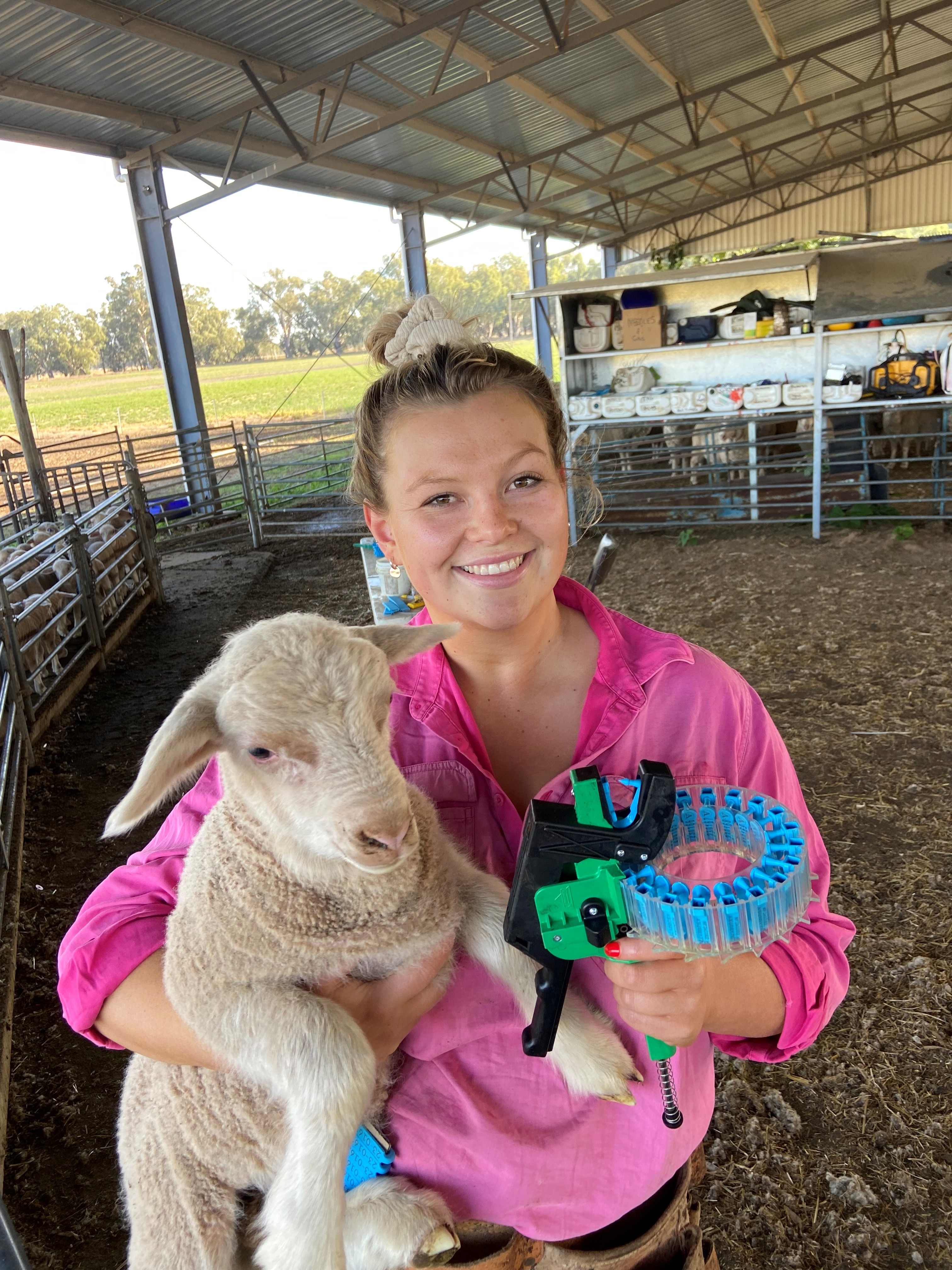Unlocking the potential of eID

A new AWI and MLA co-funded project will raise awareness amongst sheep and wool producers of the opportunities for using electronic identification (eID) to increase their productivity, with the aim to increase adoption of precision sheep management techniques.
In an initiative aimed at improving livestock traceability and biosecurity, Australia’s federal and state agriculture ministers in 2022 resolved that the sheep industry will transition towards nationwide mandatory eID by 1 January 2025. An eID device, which is generally in the form of an ear tag, contains a microchip that relates to each individual sheep.
Although mandatory eID is being introduced so that animals can be traced quickly and more easily during a disease outbreak, eID can also provide on-farm productivity benefits for sheep and wool producers. There are producers across the country already using eID as an individual animal management tool.
“The increasing availability of eID on all Australian sheep farms presents a major opportunity for the sheep and wool industries to exploit the wider range of applications that eID allows beyond the mandatory requirement to upgrade traceability systems,” said AWI General Manager, Research, Bridget Peachey.
“Identifying the level of production – such as regarding fertility, weight, and wool traits – and the return that each individual animal contributes to their business can enable woolgrowers to make more informed management decisions when it comes to, for instance, culling and breeding, thereby increasing profitability.”

A stick reader can quickly and accurately identify the eIDs of your livestock. PHOTO: Shearwell Data
Productivity benefits from eID
A new five-year project funded by AWI and Meat & Livestock Australia aims to unlock the broad potential of eID and precision sheep management for sheep and wool producers to improve their on-farm productivity and profitability. The project is being carried out by the University of Adelaide with key collaborators Murdoch University, neXtgen Agri, WA Department of Primary Industries and Regional Development, and Farming Systems Analysis Service.
“While the use of eID will soon be mandatory, using eID for individual animal management is optional. The decision to purchase, for instance, a tag reader and equipment for drafting and weighing is up to each producer based on preference and capability,” Bridget said.
“To transition away from whole flock management towards managing groups and individuals within the flock, producers need to assess and see the value of precision sheep management to justify an investment in infrastructure and skills.
“This new project aims to help producers see the value in eID and how it can enable them to make better informed decisions on individual animals in their flock.
“Utilising existing and novel sheep and wool industry extension channels, the project will firstly raise awareness of the opportunities for producers and then support adoption.”

Ruby Woodlock of Forbes tagging two-week old lambs with eID in April last year at Lachlan Merinos in NSW.
The key activities in the project will be:
- Raise awareness of the opportunities in eID and precision sheep management to improve weaning rates and weaner growth rates. Extension materials will be developed and delivered via existing producer networks.
- Develop at least six business cases for investing in the extra infrastructure needed to capture the management benefits of eID beyond that necessary to meet the statutory requirements.
- Develop two ‘delivery-ready’ learning modules in the first 12 months tailored to engage producers with varying technical capability and infrastructure.
- Establish more than 30 demonstration sites to engage and support farmers to effectively use eID to monitor an intervention of their choice. The ability to ‘observe’ technologies and precision sheep management systems successfully operating on commercial farms is considered a critical element in producers deciding to adopt precision sheep management. To be representative of industry variation, sites will be recruited to provide coverage across New South Wales, Victoria, South Australia and Western Australia; various enterprise types; and differing levels of infrastructure and data collection intensity.
- Establish at least 24 participatory R&D sites combined with further analysis of existing data to quantify differences in reproductive rate, lamb survival, weaner growth rate and wool production responses for different groups of animals within flocks. These sites will provide a more evidence-based approach for the optimum segregation and management of individual groups of animals within flocks.
This article appeared in the December 2024 edition of AWI’s Beyond the Bale magazine. Reproduction of the article is encouraged.















